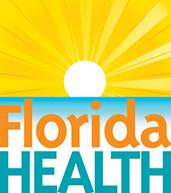It's a New Day in Public Health.
The Florida Department of Health works to protect, promote, and improve the health of all people in Florida through integrated state, county, and community efforts.
Aquatic Toxins In Florida
Contact: Florida Health
- 850-245-4444
- health@flhealth.gov
-
Mailing Address
Florida Health
4052 Bald Cypress Way
Tallahassee, FL 32399
Florida’s waterways are essential to the state’s environment, economy, and way of life, but they can sometimes be affected by aquatic toxins. These harmful substances, often produced by algae and cyanobacteria during harmful algal blooms (HABs), can pose risks to human health, marine life, and ecosystems. Being informed about aquatic toxins and their effects is key to enjoying Florida’s natural resources safely.
What Are Aquatic Toxins?
Aquatic toxins are chemicals released by certain types of algae and microorganisms during bloom events. In Florida, these blooms are commonly associated with:
- Red Tide: Caused by Karenia brevis, red tide produces brevetoxins that can irritate the respiratory system and harm marine life.
- Blue-Green Algae (Cyanobacteria): Found in freshwater, these blooms can produce toxins harmful to humans, pets, and wildlife when ingested or contacted.
Health and Environmental Hazards
- Health Risks: Breathing airborne toxins can cause respiratory irritation, especially for individuals with asthma or allergies. Skin contact with affected water may result in rashes, and consuming contaminated seafood can lead to gastrointestinal issues.
- Environmental Impact: Aquatic toxins can cause fish kills, degrade water quality, and disrupt marine ecosystems, leading to economic and ecological challenges.
Staying Safe
- Stay Updated: Keep informed about bloom conditions and advisories from trusted sources like the Florida Department of Environmental Protection and NOAA’s Harmful Algal Bloom Forecasts.
- Avoid Affected Areas: Refrain from swimming, fishing, or boating in waters with visible blooms or odors. Keep pets and children away from contaminated water.
- Follow Health Advisories: Follow safety guidelines related to seafood consumption and water contact, particularly during bloom events.
Learn More
For more detailed information about aquatic toxins and their impacts on Florida’s waterways, visit the following resources:
- Florida Department of Health: Aquatic Toxins Overview
- EPA: Harmful Algal Blooms (HABs)
- CDC: Harmful Algal Blooms and Public Health
Protecting Florida’s Waterways for Future Generations
Florida's waterways are a vital part of the state’s environment and economy, but they require collective efforts to safeguard them from the effects of aquatic toxins. Staying informed about harmful algal blooms, understanding potential health risks, and following safety advisories are key to protecting both public health and marine ecosystems. By adopting responsible practices and utilizing resources from trusted organizations, individuals can help preserve Florida’s water quality and ensure these natural treasures remain accessible and safe for future generations.



Connect with DOH